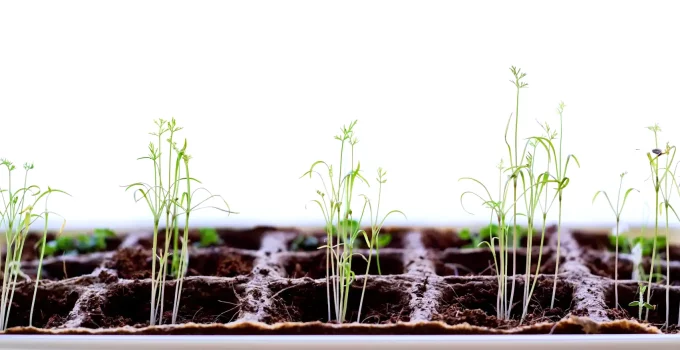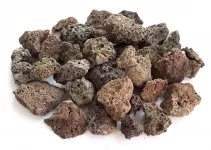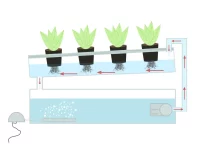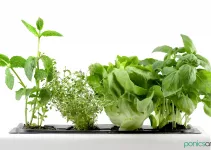Searching for the best seeds for hydroponics is, frankly, a truly vast subject. Which makes it for a rather long and interesting discussion.
I’m going to take this discussion on seeds for hydroponics and mainly explore which plants we should grow in various hydroponic systems and which are some of the best seeds we should go for.
We’ll also talk about whether we need special seeds for hydroponics. The answer is no. Whether we grow in soil or in water with hydroponic nutrients, the seeds we need and use are the same.
We might prefer special seeds if we’re growing microgreens or growing sprouts at home. But if we’re growing full plants, no matter which environment we’re growing in, then seeds are universal. There are no special seeds for soil or special seeds for hydroponics.
Another thing we should talk about is what other things we need to germinate these seeds for our hydroponic systems. Germination is the first part of the process and it’s a crucial part because if we don’t germinate our seeds we can’t grow plants.
Table of Contents
11 Best Seeds for Hydroponics
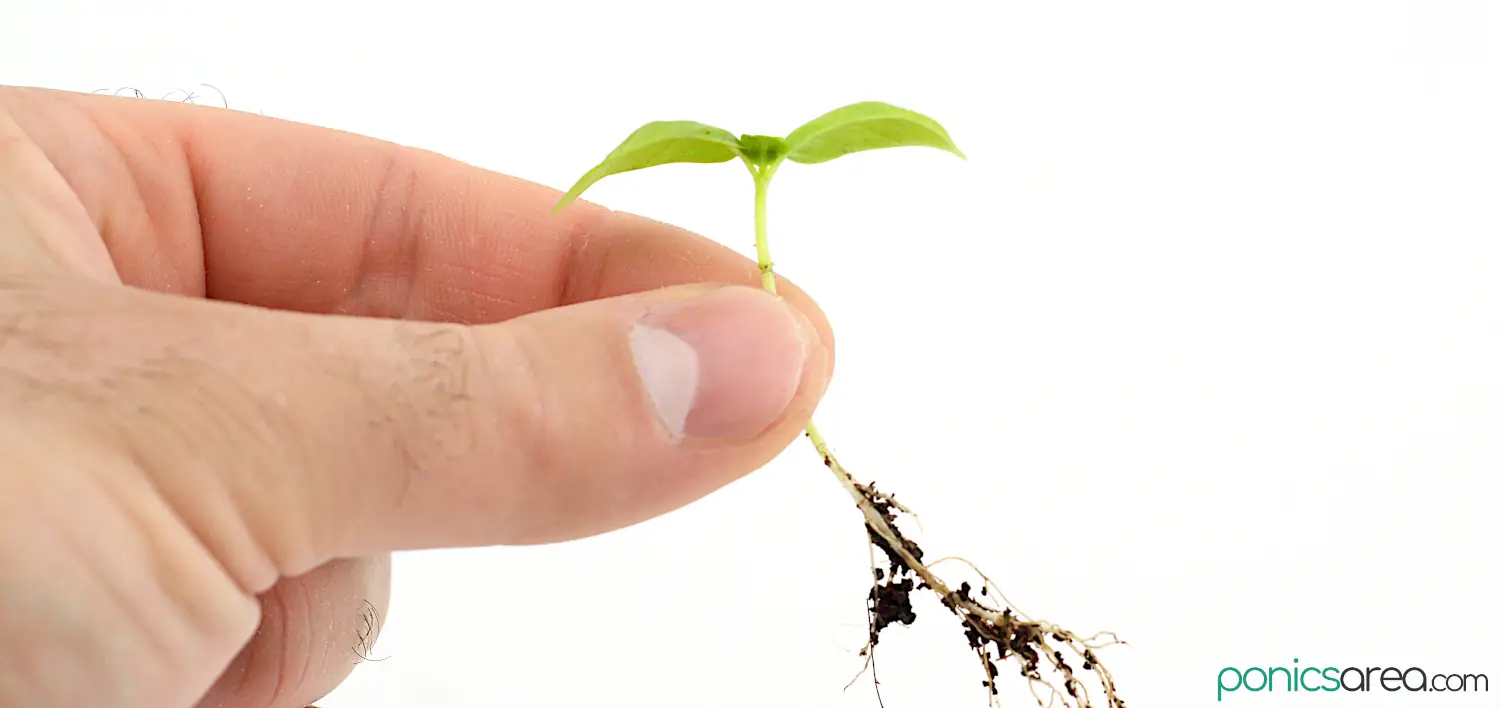
For complete beginners to growing crops at home, my advice is this: go to your local nursery and ask for seeds for the plant you want to grow.
If you want to grow lettuce, ask them to recommend which seeds are the best among what they have.
You don’t have to buy the seeds that I’m recommending if you have a good nursery where you live. I’m using my recommendations as examples so that you can see what type of plants we can grow in hydroponics.
These examples will also allow me to show you which varieties work best in hydroponic systems. For example, we’ll have better success growing loose leaf lettuce than you would growing iceberg.
I also want to take this opportunity and talk about seed kits that are sold for some indoor hydroponic systems or hydroponic gardens, AeroGarden being the most famous of them all.
All in all, my initial advice stands: once you’ve figured out which varieties would work best in the type of hydroponic system you have, go to a local nursery and ask them for the best seeds for the plants you want to grow. It’s the easiest way to get the best seeds for hydroponics.
Also, stick around because I’m also going to talk about some alternatives to propagating from seed, like growing from cuttings or buying transplants to skip a lot of work.
1. Lettuce seeds for hydroponics
I am sure that many of us first became aware of hydroponics as a method of growing crops when we saw some video about how industrial growers are growing lettuce. It sure was a revelation for me, especially when I saw that we can use smaller systems at home to grow small crops of lettuce.
Thus, most of us start our journey by experimenting with growing lettuce because it really is the easiest to grow hydroponically. Well, even if we sow seeds in soil, lettuce plants grow easily and don’t need much from us.
Since lettuce is the crop most of us start with, it’s only normal to introduce it first when we’re looking for the best seeds for hydroponics.
There are many lettuce varieties to choose from. I prefer growing loose leaf lettuce or butterhead because I love it. Romaine is delicious, too.
I just don’t recommend growing iceberg because that one needs to form a head. It’s more complicated and it takes a lot longer.
When we’re growing lettuce in hydroponic systems we can also harvest the leaves 2-3 times before they grow back too tough and bitter for us to enjoy. Thus, we can do so many harvests from a single plant until we’re done with it. It’s wonderful.
Lettuce thrives in hydroponics so much because it’s a plant that loves water and the only major thing we need to keep in mind is that lettuce prefers a cool temperature.
It’s also why we’re not growing lettuce in the summer if we grow soil crops.
Lettuce also grows in even the most basic hydroponic system, like a DWC with just an air pump. We still need grow lights if we’re growing indoors in a place that doesn’t allow for direct sunlight.
Beginners should start with the following lettuce varieties:
- Loose leaf lettuce – this is the easiest to grow variety, it’s the perfect first plant to start growing in hydroponics and the loose leaf lettuce is really tasty and it gives good harvest
- Butterhead – the classic lettuce, another perfect choice to start off with
- Romaine – a perfect lettuce for salads and sandwiches, it has such a delicious crunch and a very refreshing and juicy taste but some might not like it all that much because it tastes just a tiny bit bitter
- Lollo – the red leaves variety is a beauty to witness growing and it has a sweet, slightly bitter and nutty flavor but maybe postpone buying lollo seeds until you have a bit of experience
2. Herbs seeds for hydroponics
I wrote an entire article on herbs that can grow hydroponically. I also mentioned the conditions that each herb requires so I recommend checking that out if you are interested in these easy-to-grow plants.
We can grow a lot of herbs in hydroponic systems and we don’t need a complicated system at all.
Just like lettuce, herbs are not all that demanding and they can be grown easily by beginners. Ideally, you should start germinating lettuce seeds, which only takes a couple of days, grow some lettuce plants to understand how nutrient solutions and grow lights work and then move on to some herbs to experiment further and learn even more.
I also enjoy buying a variety of seeds, like the Oregano Republic 18 Most Popular Culinary Herbs & 15 Salad Greens Seeds Packs. It’s nice to have a bundle of seed packs for herbs and leafy greens to choose from and we don’t need to look for them individually so it makes things easier.
The hydroponic growing conditions for herbs are:
- 5.5 to 6.5 pH, the classic range
- average EC of 2
- grow lights for 10-12-14 hours if you can’t place your system to receive at least 6 hours of sunlight daily
- a temperature of at least 60 degrees F but 70 degrees F is a good average temperature for all herbs, some enjoy cooler temperatures (oregano, parsley, cilantro, mint, fennel), while others can thrive in warmer temperatures (basil, sage, dill, chives)
And obviously we need hydroponic nutrients but each comes with its own clear instructions so you just have to follow those instructions when you’re preparing the water for your seedlings.
Basil seeds for hydroponics
Among the many types of herbs we can grow hydroponically, I recommend starting off with basil. Basil is definitely pretty easy to grow but it’s also delicious and has a variety of uses so you’ll enjoy harvesting leaves regularly.
Basil will thrive even in a rudimentary plastic bottle hydroponic wicks system as long as you give it nutrients, light (6-8 hours sunlight or 10-12 under grow lights), and maintain a temperature between 70-90 degrees F (21-32 C). It’s a wide range.
We can grow Genovese (Italian) basil, Thai basil, Greek basil, lemon basil, purple basil, etc.
3. Kale
Many members belonging to the cabbage family shouldn’t be grown in hydroponic systems.
Kale is a clear exception.
Just like we can grow lettuce, we can also grow kale. It’s pretty much just as easy.
We just need to remember that these leafy greens prefer cooler temperatures, which makes them perfect for winter growing indoors, too.
Germination takes 4-7 days and we can harvest in 9-11 weeks. Just like lettuce, we can harvest the leaves and new ones will continue to grow.
We can grow Curly kale or Scots kale.
4. Spinach
Another leafy green that we should consider growing in hydroponics is spinach. It requires similar growing conditions to lettuce so you don’t need to do anything different.
We can germinate the seeds in 7-10 days and we can harvest within 6 weeks, especially if we only want to harvest the smaller, tender leaves, which are also known as baby spinach.
Thus, if we want to grow baby spinach hydroponically, all we need to do is harvest the leaves when they’re small and tender. We don’t need special seeds, just choose whatever spinach variety you want.
You can choose spinach varieties like Olympia, Space, and Red Spanner.
Of course, baby spinach is easily grown at home in containers, too.
5. Tomato seeds for hydroponics
Once we get used to growing lettuce and herbs, we can move on to growing tomatoes hydroponically.
Things are getting more serious, that’s for sure. For example, tomatoes need a system that offers them stability because they’re much heavier than lettuce and herbs plants. The same goes for peppers and cucumbers. We’re also going to need to offer them support in the form of trellises.
While we could use a simple polystyrene raft to support our lettuce and herbs floating on the water with nutrient solution in a DWC, for heavier, bigger plants, we’ll need to make a DWC from a plastic tote with a sturdy lid. We make the holes for the net pots in the plastic lid and that should be good enough for small cherry tomato plants.
If we want to keep things extremely simple we can grow 2-3 cherry tomato plants with the Kratky method in a 5-gallon storage tote. The same goes for peppers and cucumbers or even eggplants.
Of course, if we have big systems, like a nutrient film technique (NFT), ebb and flow or drip system, then we can grow whatever tomato varieties we’d like.
Professional growers use the nutrient film technique systems to grow huge tomato plants in huge greenhouses. You can see what equipment such a big production requires here.
For smaller systems, like indoor hydroponics gardens (like those from AeroGarden or iDoo or moistenland) or small DWC made from a storage tote, we need to focus on growing certain tomato varieties that won’t overwhelm our smaller systems.
Tomato varieties for small systems
If you grow in small hydroponic systems, I recommend first starting with Tiny Tim tomato seeds.
Other tomato seeds that you can try growing are:
- Gardener’s Delight Cherry, Napa Grape as indeterminate tomato varieties
- determinate tomato varieties: Tiny Tim, Sweet Baby Girl Cherry, Sprite Grape, Tomato Tumbler, Patio Princess, Bushsteak.
6. Pepper seeds for hydroponics
Once you learn how to germinate tomato seeds, when to transplant them into the hydroponic system, and how it’s best to use nutrients, you’ll pretty much have it all figured out for growing peppers and cucumbers hydroponically.
These three plants have a lot of things in common because all three are plants that bear fruit. We didn’t have that with lettuce and herbs and that’s why they’re so much easier to grow.
All three plants also grow quite big so they’ll need bigger systems or you’ll have to grow fewer plants in a smaller system.
And they all benefit from trellises. You’ll also have to do research about pollination because these plants go through various growing stages. Each stage has its own special requirements that indicate whether our plants are on the right timeline or not.
When it comes to choosing the best seeds for hydroponics, if we want to grow peppers we can either grow bell pepper varieties or chili varieties.
We can grow a whole range of bell peppers of various colors.
Or we can choose to grow chili plants, like sweet banana peppers, jalapeno, poblano, shishito, cayenne, cherry peppers, Anaheim, etc.
The plants will also need pruning, especially bell pepper plants.
7. Cucumber seeds for hydroponics
The thing we all know about cucumbers is that these plants grow very long. We absolutely need a trellis to get them to grow in height and not slump on whatever surface they can find.
If you’re looking for the best seeds for hydroponics for small systems, I recommend varieties like:
- pickle size varieties: Boston Pickling Cucumber, the National Pickling Cucumber, the Bush Pickle
- cocktail mini cucumber varieties: Herkins, Mini Munch, Excelsior, Picolino
8. Eggplants
Another plant that has quite a lot in common with tomatoes, peppers, and cucumbers is the eggplant plant.
If your system is small and that includes an indoor hydroponic garden, then I recommend getting Fairy Tale Eggplant seeds.
Other varieties you can consider for bigger systems are: Balck King, Globe/American, Chinese, Japanese, Graffiti/Zebra/Sicilian, Little Green, and Rosa Bianca.
9. Beans
We could say that beans can be considered low-maintenance legumes that can be grown in hydroponics.
Green beans, pole beans, lima beans, pinto beans are just a few examples of varieties that you can consider.
Beans require warm weather, a pH around 6, and obviously a trellis or some kind of support.
It will take between 3-8 days to germinate the seeds. We can expect to harvest in 6-8 weeks and to continue the crop for another 3-4 months.
Dwarf beans should be mentioned among the best seeds for hydroponics because they can be adapted to smaller systems, too.
10. AeroGarden seed pod kits
AeroGarden is a smart manufacturer and I like them for this exact reason.
They don’t make buyers wonder which are the best seeds for hydroponics because they provide seed kits to make our lives easier.
The price is not cheap but hydroponic indoor gardens are not exactly known for being the cheapest hydroponic systems.
They’re the perfect solution for people who want to grow plants indoors, even on the kitchen countertop.
There’s a learning curve involved but these manufacturers are trying to make things as easy as they can.
AeroGarden even decided to sell seed pod kits to make things even more simple.
They offer complete kits with seeds that are already inserted in the grow pods, they include liquid nutrients for growing the plants, and the grow domes for optimal germination.
We also get a Growing Guide with step by step instructions. I really don’t think that it gets much easier than that.
We also get to choose between buying 3-pod, 6-pod, 9-pod or 12-pod and 24-pod for some. That’s because there are different AeroGardens of different sizes.
We get the following AeroGarden seed pod kits to choose from:
- Heirloom Salad Greens – featuring gourmet lettuce varieties like Black Seeded Simpson, Deer Tongue, and Parris Island
- Gourmet Herb – we get a nice range of herbs to grow in AeroGarden indoor gardens, like Genovese basil, Thai basil, curly parsley, thyme, mint and dill
- Mixed Romaine – these pods feature seeds for red and green romaine lettuce varieties
- Salad Greens – contains seeds for popular lettuce varieties, like red/green leaf, romaine, and butter head
- Red Heirloom Cherry Tomato – we can obviously grow cherry tomatoes in some AeroGardens, check out my article on the best AeroGarden for tomatoes if you want to learn how
- Salsa Garden – includes red heirloom cherry tomato and jalapeno pepper seeds
- Cascading Petunia – AeroGarden also offers us the opportunity to grow flowers from seed in their hydroponic systems, we can grow pink, purple, and white petunias
- Colorful Coleus – another seed pod kit for growing flowers in hydroponics, this time we can grow colorful coleus for a lively room even in the winter
If you don’t want to buy their seed pod kits that already have the seeds inserted in the grow pods, you can buy the AeroGarden Grow Anything Seed Pod Kit that only includes grow sponges, grow domes, grow baskets, 3 oz bottle of liquid nutrients, pod labels, and a growing guide.
If you buy this Grow Anything Seed Pod Kit, you’ll get to germinate and grow plants from whatever seeds you prefer.
11. Should you grow strawberries from seed?
We’ve talked about growing a lot of plants from seeds in hydroponic systems but I want to talk about growing strawberries hydroponically in a separate heading.
That’s because I don’t recommend growing strawberries from seed.
It can be done but it’s quite complicated. It will be like growing blueberry plants from seed. Both can be done but it’s not easy.
If you want to grow strawberries in hydroponics, I recommend buying runners. It’s very easy and you’ll absolutely appreciate not having to deal with germinating strawberry seeds. I wouldn’t attempt it under any circumstances.
Also, you can also easily grow strawberries vertically even indoors in soil. If this is the plant that you want to grow the most, you have all sorts of options, even if you have a limited space indoors.
Plus, we can also grow in small hydroponic indoor gardens (AeroGarden, iDoo) or in mason jars with the Kratky method. We have a lot of options.
Just remember: grow strawberries from runners, not from seed.
Alternatives to buying seeds for hydroponics
Since I’ve offered you a few examples of the types of seeds you can buy to start a crop in your hydroponic system, I also want to talk to you about alternatives to propagating from seed.
Propagating from seed is not the only way we can grow plants, whether in soil or hydroponics. There are other options some of you might prefer better.
Growing from cuttings
Some plants can be grown from cuttings.
For example, herbs can be easily grown from cuttings. You can buy a live plant from a nursery (basil, mint, oregano, parsley, cilantro, etc.) and cut it up in small branches.
Keep the cuttings in water until they grow tiny roots. You can use a jar or a glass or whatever containers you have around the house. You don’t need any special preparation to grow from cuttings.
Just change the water frequently.
Many flowers can also be grown from cuttings but I prefer using beautiful pots and soil for my flowers.
Buying transplants from nurseries
Another way to grow plants is by buying transplants from nurseries. Transplants are also called starts.
The advantage of buying transplants directly from a nursery is that you skip the whole lengthy germination you have to do at home. Also, for people who are not confident that they have enough time or energy to germinate seeds at home, buying starts can save them a lot of trouble.
The only problem is that transplants are a lot more expensive than buying a pack of seeds. If you want to grow a big crop, the costs add up.
On the other hand, if you want to experiment with growing some tomatoes or peppers in a small system, like a small Kratky system where you only have space for maybe 3 tomato or pepper or cucumber plants, then you can buy the transplants from the nursery and skip about a month or a month and a half of work.
Use of seed is the least expensive option for people who grow large crops but buying transplants won’t have a big impact for people who only grow a few plants.
You can read more about buying transplants from a nursery here.
Which plants aren’t best grown in hydroponics?
In theory, we can say that we can grow all vegetables in hydroponics and a few fruits, which are basically limited to strawberries because those are the only small plants that grow fruits.
In practice, we also can’t grow all vegetables. Let’s see why.
I wrote an article on how to grow potatoes in hydroponics. And now I’m going to tell you that you shouldn’t consider growing potatoes in a hydroponic system.
I also wrote an article about how to grow hydroponic onions. It’s another vegetable that I don’t think most people should attempt growing in hydroponics.
So, let’s gather a full list of vegetables that technically can but shouldn’t be grown in hydroponics because they require extremely big hydroponic systems with a lot of depth in their growing medium and very big grow beds.
The exception is represented by people who own very big ebb and flow systems that are equipped with big grow beds. These big grow beds have enough depth in them to grow potatoes or carrots or to grow medium-rooted or deep-rooted vegetables or to grow vegetables with big heads that need space to grow.
Drip systems can also be equipped with very large grow beds and they’re some of the most efficient systems we could build at home.
Another system that works for most of these plants that I’m going to mention are 5-gallon DWC systems. If you equip the buckets with 6-inch net pots, you’ll have plenty of space for bigger plants but they still won’t work for potatoes, sweet potatoes, carrots, etc.
Potatoes
Can you grow potatoes hydroponically? In theory and with the right equipment, we can grow most plants hydroponically, including tubers.
Would many people be able and willing to grow potatoes in hydroponic systems?
I seriously don’t think so.
Frankly, buying some potato grow bags and a few bags of soil is just so much easier to do. And potatoes grow so well in those grow bags.
Or you can fill 5 gallon buckets with soil and plant sprouted potatoes or seed tubers and grow potatoes like that.
Of course, if you like playing with big hydroponic systems, then you’ll want to give it a try if you have an ebb and flow or a drip system.
Keep in mind that high profundity is essential here. You need a growing medium with enough depth for tubers to grow. I recommend using coco coir, and a mix of perlite and vermiculite.
However, my advice remains: trying to grow crops that usually grow in the ground hydroponically is going to be a true challenge. And don’t even think about it if you’re just starting out with hydroponics.
Carrots
Alongside carrots I should also mention a few other vegetables that shouldn’t be grown in hydroponics by a lot of people:
- beets
- radishes
- leeks
- yams
- parsnips
- horseradish
- turnips
Carrots are another example of vegetables that grow in the ground. And they grow quite deep in the ground, being medium root vegetables with roots between 18 to 24 inches.
That means that we need a profound growing medium when we’re trying to grow vegetables like carrots in hydroponic systems.
Rashishes can be an exception if we’re growing button red radishes. These are small so they don’t require a very profound growing medium.
Onions
Another example of vegetables that grow in the ground are onions. While they don’t require the same profundity as potatoes and carrots, they still need plenty of growing medium to develop the bulb.
Of course, if you have an ebb and flow or a drip with large grow beds and a huge quantity of growing medium, then you can try growing onions.
I would much better grow onions in big grow bags or in containers indoors than trying to grow them hydroponically.
For those who only have small systems, I recommend growing chives, which are a herb and they’re fairly easy to grow.
Cabbage family
I would say that growing kale in hydroponics is totally possible even if you don’t have a very big hydroponic system.
So, kale is the exception to the plants that belong to the cabbage family. Kale is a leafy green that can be grown in hydroponics, even with the Kratky method. It’s actually quite easy.
There is a whole array of plants from the cabbage family that I wouldn’t recommend growing in hydroponics.
Let’s take the white cabbage as a first example.
First of all, I wrote above that I don’t recommend growing iceberg lettuce in hydroponics. That’s because this variety needs to grow many layers of leaves, which then form a head of lettuce. That takes so much longer to do in a hydroponics system than simply growing loose leaf lettuce or butterhead lettuce.
A head of cabbage is also a tightly wound ball formed from multiple leaves. That takes a lot of time until it’s formed.
Another aspect to consider is that we need a lot of space, we need big grow beds if we want to grow a few cabbages.
Or we can grow each plant in its own 5-gallon bucket in a DWC. That way, each head has enough space to grow and the roots have plenty of space to thrive. You’ll also need 6-inch net pots because this is a big plant.
However, I would say that the ebb and flow system remains the best option in this case, too. Or a drip system with a very large grow bed.
Other plants from the cabbage family that I wouldn’t recommend growing in hydroponics are:
- cauliflower
- broccoli
- Napa cabbage, Savoy cabbage
- kohlrabi
- Brussel sprouts
How to germinate seeds for hydroponics
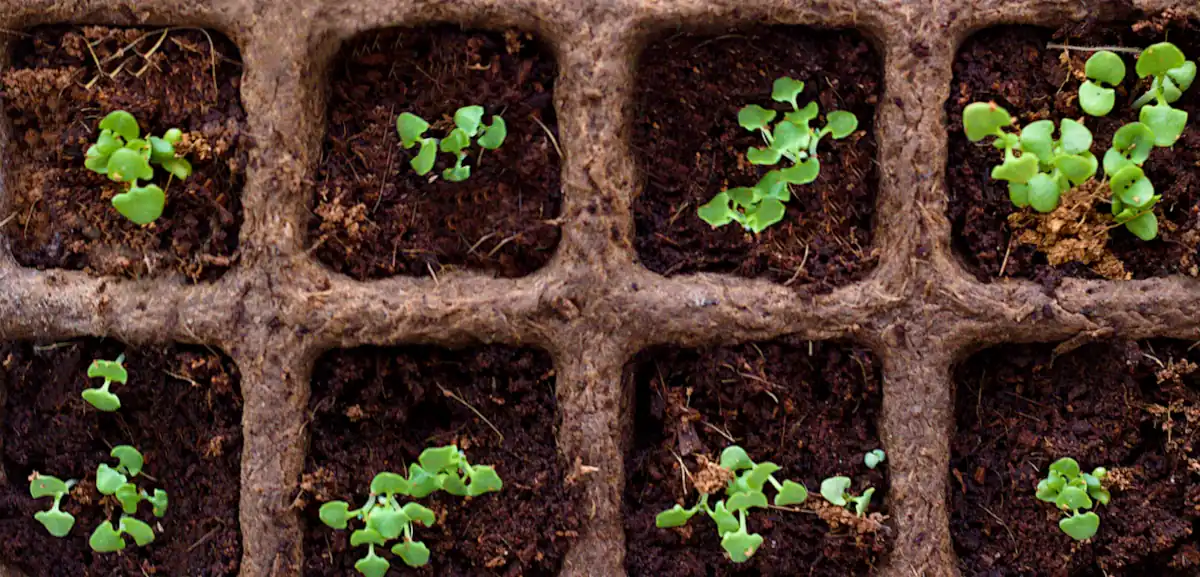
We’ve covered the best seeds for hydroponics and the plants we should focus on growing and the ones that are best left alone unless we have some serious system with profound grow beds.
Now, let’s quickly go over how we can easily germinate any seeds until they can be transplanted into our system.
I must also remind you that you should check out what each individual plant requires.
For example, while we can germinate lettuce seeds in a couple of days, we need to go through a lot more stages when we germinate tomato seeds before we can transplant them into our systems.
Tomato seeds take 5-10 days to germinate. Within that time frame we get our tiny seedlings but we’re far from done. We can actually add nutrient solution when the tiny leaves appear. And the seedlings cannot be transferred into our systems until they’re about 6-8 inches tall.
If we consider that we do our first pruning for our basil plants when they’re 6 inches tall, we can certainly see how plants differ from one another even when it comes to germination. That’s why we must do our research for the different seeds we want to grow in hydroponics.
The components we need for germinating seeds are:
- rockwool cubes – these are still my favorite for germinating seeds and we can transplant the seedlings together with the rockwool cubes in the hydroponic system so we don’t have to remove the seedlings
- water
- a toothpick to pick up small seeds
- germination tray – you can use a standard seed tray with a humidity home or you can improvise and you can use whatever container/tray with a cover you have around the house, I even saw someone germinating in a cake transporter that received a few tiny holes
- temperature between 70-80 degrees F
- additionally, people place the tray on a seed starting heat mat
What is left for you to do is to maintain the rockwool cubes moist. You can do that by adding a bit of water in the tray once a day. Or you can mist the cubes.
We will remove the dome when sprouting starts.
In most cases, we add two seeds per rockwool cube. It’s to make sure that of the two at least one sprouts. If both sprout, we need to cut the smaller seedling. Cut it, don’t try to pull it out from the cube because it can damage the other seedling.
We can usually transplant the rockwool cubes with the seedlings once they reach 2-3 inches in height, unless there are different instructions we must follow like we saw for tomatoes.
We don’t use nutrient solution during germination because the seeds contain everything they need for growing as seedlings.
The seedlings come in contact with nutrient solution when they’re transferred into our hydroponic systems.
Do you need special seeds for hydroponics?
You absolutely don’t need any special seeds for hydroponics.
You’ll get to buy the same seeds that people are buying for their soil crops. The difference is that you’ll be growing those plants in water with nutrient solution.
And you’ve already seen which are some of the best seeds for hydroponics from the examples I’ve offered but I also advise you to visit your local nursery when you need to buy some seeds or transplants.

